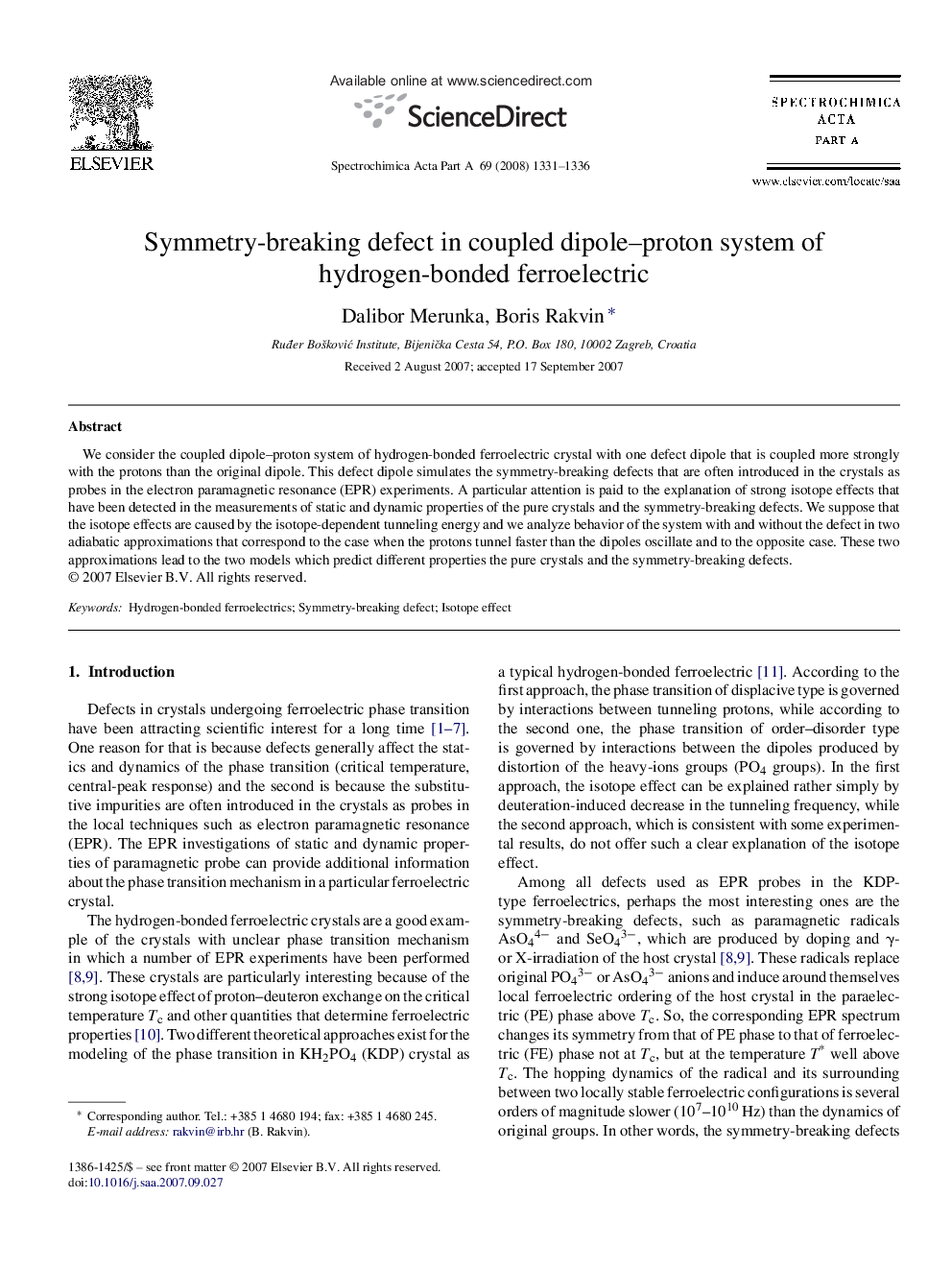| Article ID | Journal | Published Year | Pages | File Type |
|---|---|---|---|---|
| 1238233 | Spectrochimica Acta Part A: Molecular and Biomolecular Spectroscopy | 2008 | 6 Pages |
Abstract
We consider the coupled dipole-proton system of hydrogen-bonded ferroelectric crystal with one defect dipole that is coupled more strongly with the protons than the original dipole. This defect dipole simulates the symmetry-breaking defects that are often introduced in the crystals as probes in the electron paramagnetic resonance (EPR) experiments. A particular attention is paid to the explanation of strong isotope effects that have been detected in the measurements of static and dynamic properties of the pure crystals and the symmetry-breaking defects. We suppose that the isotope effects are caused by the isotope-dependent tunneling energy and we analyze behavior of the system with and without the defect in two adiabatic approximations that correspond to the case when the protons tunnel faster than the dipoles oscillate and to the opposite case. These two approximations lead to the two models which predict different properties the pure crystals and the symmetry-breaking defects.
Keywords
Related Topics
Physical Sciences and Engineering
Chemistry
Analytical Chemistry
Authors
Dalibor Merunka, Boris Rakvin,
